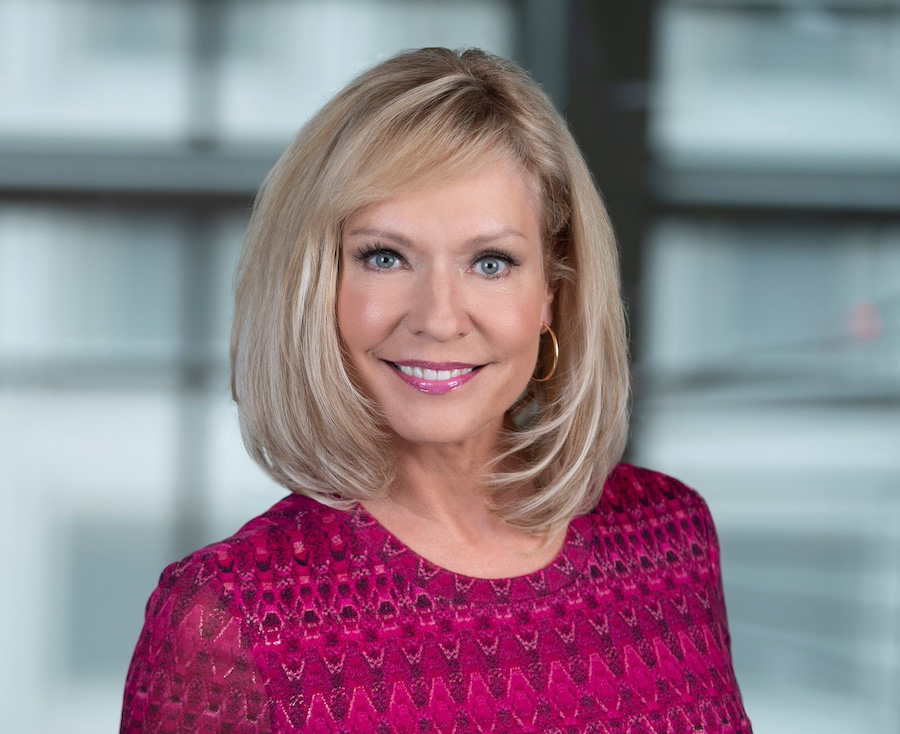A Journalist’s Journey Into Comms Leadership
By Anita Brikman
April 2024
When I graduated from college, I couldn’t believe that I was heading straight to the job I had dreamed of since childhood: working in a broadcast newsroom. I had no doubt it was the career for me. I loved the energy, the chaos, the endless stories and the fascinating people I met in broadcast news.
Working as a health care reporter and news anchor was a challenging, satisfying career that took me from smaller markets in the Midwest to the bright lights of Philadelphia and Washington, D.C. Every day, I felt fortunate to be doing what I loved, especially after achieving my goal of becoming an evening news anchor in a major market.
Yet, despite feeling proud of what I’d accomplished, I knew that after more than two and a half decades in the newsroom, a career change was inevitable and would be the right decision. For years, I had altered between 3 a.m. wake-up calls and late-night newscasts, a schedule that had taken its toll on me.
Just as I’d been determined to join a newsroom at the start of my career, I knew exactly what I wanted to do when it was time for me to leave the newsroom: run a communications shop. After years of working with talented news professionals to produce touching stories that had an impact, I hoped that what I had learned in the dynamic environment of broadcast journalism would be a valuable asset when switching careers to communications. Little did I know that, now, just over a decade since entering communications, the traits that I learned in the newsroom would lead to significant leadership opportunities.
Writing your career ‘lede’
I was leaving the relentless pace of news behind, but still needed to find the “lede” for my new career story — which would be to work with mission-driven organizations in health care. After being a health care reporter on TV, the transition gave me a sense of expertise and continuity.
Organizations such as the National Hospice and Palliative Care Organization and the Consumer Healthcare Products Association became my professional homes. I could contribute to causes that aligned with my values and with my experience as a health care journalist.
Now, as president and CEO of the Plasma Protein Therapeutics Association, an organization committed to the well-being of patients who rely on plasma-derived therapies, I’m able to strategize and communicate while leading a global organization into a new era. I am grateful that my journalism experience has prepared me for the job.
Like any good story, our careers have an arc and a theme. Mine has always been about championing health and wellness. As a reporter, I loved the medical beat. The stories that I covered were challenging and rewarding, usually focused on helping people understand medical research and medical advances. Those stories might encourage viewers to overcome or cope with illness or empower them to take charge of their personal well-being.
When I decided to enter nonprofit communications, my previous experience as a broadcast journalist dedicated to health care advocacy would prove instrumental in my new role. By focusing on what I knew — after decades of covering the ever-changing medical landscape — I’d become an expert in a niche field, and I discovered an array of opportunities that aligned with my skill set.
Showing value as a leader
Next in my story was meeting my audience where they were — or showing my value as a leader — thanks to my journalism background. What unique attributes could I offer my colleagues and direct reports?
As I spent the first half of my career as a TV news reporter and anchor, I could communicate clearly and deliver direct messages to different audiences appropriately. I could go beyond the surface level and be an active and engaged listener, asking profound questions with impact.
Tensions can run high in the newsroom and in some communications shops. Whether facing the pressure of a live shot in TV news or the stress of telling a complicated story for an organization, we learn to be unflappable and resilient — traits that are necessary for leadership.
Whether dealing with a budget crisis or having to quickly prepare talking points a few minutes before a congressional briefing, my careers in journalism and communications have helped me thrive under pressure. If you work in public relations, then you know the feeling.
Communicating honestly, transparently
A lesson that has arisen repeatedly throughout my career, and probably yours, too, is that clear, honest communication might be difficult, but it’s always necessary. But sadly, as many of us have experienced, not all leaders communicate well. As a result, they do not lead well.
I hope more communications professionals and former journalists will aspire to executive roles. We are adroit at communication both in delivery and listening, the latter trait being often overlooked or undervalued in corporate leaders. Skills cultivated in the high-stakes worlds of journalism and PR help us stand out when we become organizational leaders.
The turning point for my career story, which laid the foundation for my becoming CEO, was my prior experience of managing a growing educational foundation focused on medicine safety.
In that role, I answered directly to a board of directors. These professional experiences gave me a deep sense of accountability and a heart for organizational leadership. My ability to plan strategically and set a future-focused direction played a pivotal role in showing that I was more than simply a communications professional — I was a business-minded leader.
Growing in new directions as a professional
Now, at the happy ending of this story, I’m fortunate to be able to reach a reflection point and share it with other communicators who want to push themselves beyond a more traditional career trajectory and embark on the path to the C-suite. Don’t be afraid to take risks and see yourself growing in bold, new directions.
My career continues to be a transformative experience, one underscored by valuable lessons, challenges and meaningful contributions. It’s a journey that has come full circle for me, bringing together the diverse threads of my professional life into a tapestry of leadership, impact and change.



